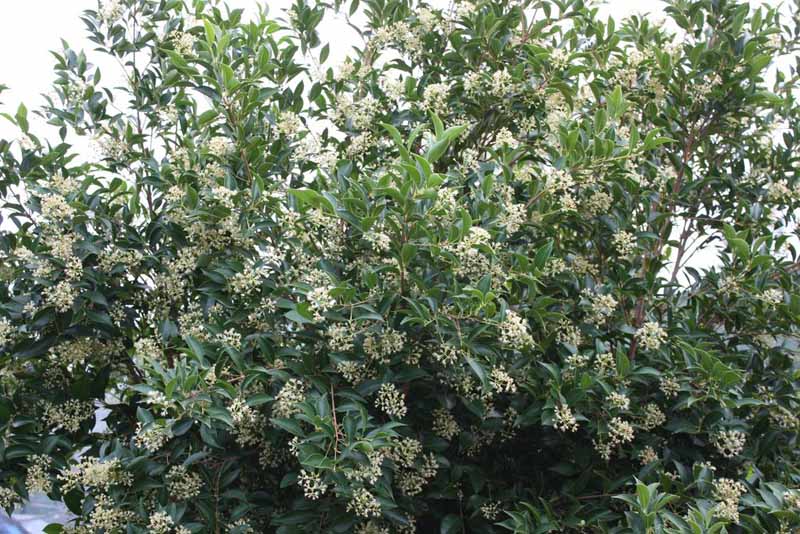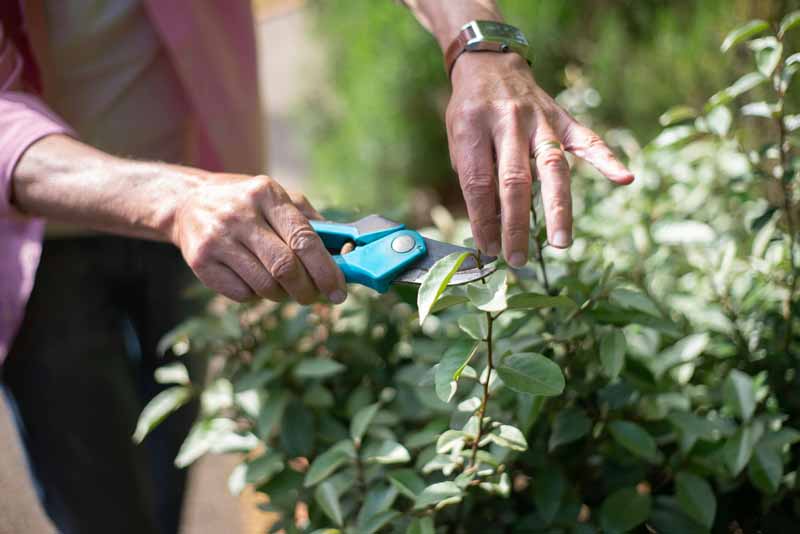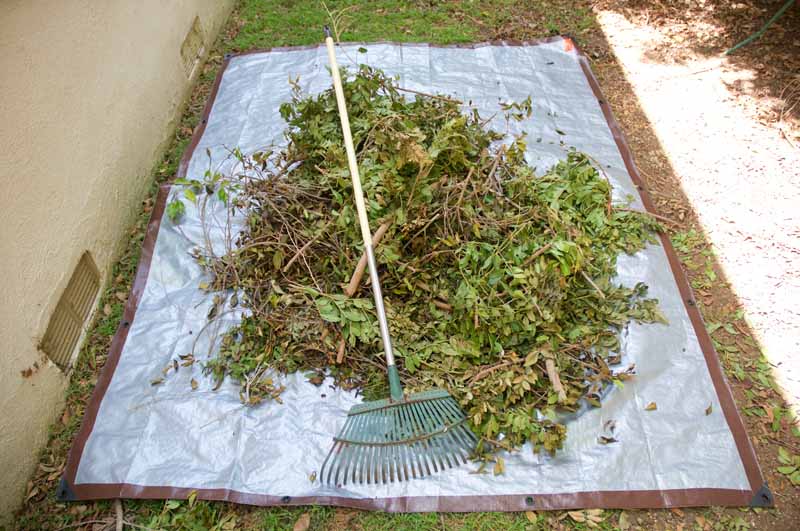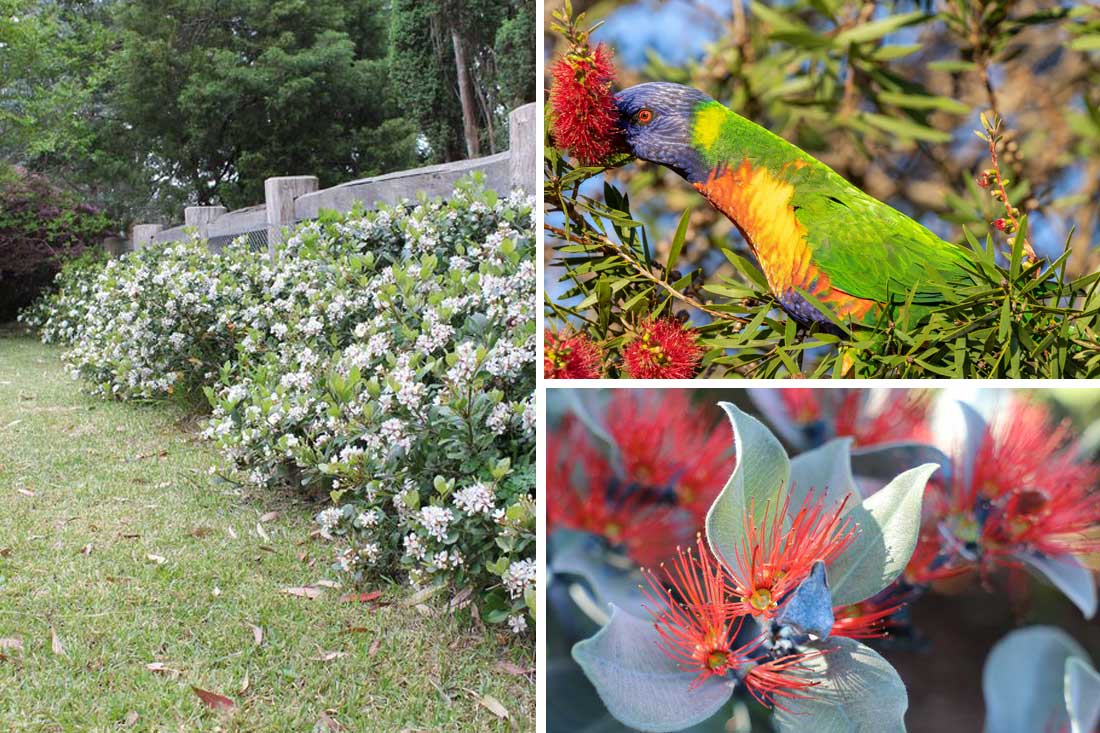Are you wondering whether lilly pillies are a good choice for your next hedge?
Lilly pilly, a common name for a group of plants across three genera – Waterhousea, Syzygium and Acmena (with Acmena recently reclassified into Syzygium), are popular choices for hedge plants. This is due to their fast growth, dense foliage, attractive appearance, and numerous other benefits.
Whether you’re looking for the perfect screening plant, topiary plant, or just something that looks nice and supports your local wildlife, the answer is yes. Here’s why.
Keep reading to learn about this best-performing lilly pilly hedge, Sublime Acmena.
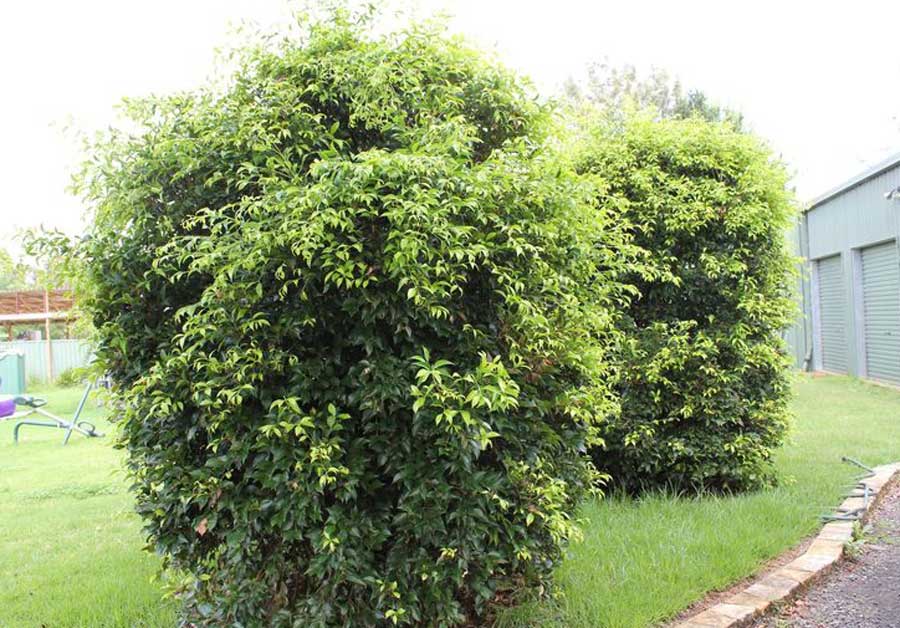
Why Choose Lilly Pilly Trees for Your Hedge?
Fast Growth
One of the main reasons lilly pillies are an excellent choice for hedges is their rapid growth rate. These trees can reach maturity quickly, making them an ideal choice for establishing hedges in new gardens or replacing old ones. Fast growth means that you can enjoy a lush, dense hedge in a relatively short period of time.
Dense Foliage
Lilly pillies are renowned for their thick, lush foliage. The dense canopy of leaves offers excellent privacy and noise reduction, making them a favoured choice for residential and commercial properties alike.
Attractive Appearance
Aesthetically, lilly pillies are hard to beat. Their glossy green leaves, vibrant berries, and fluffy flowers add a touch of beauty to any garden or landscape. Whether you’re designing a formal or informal garden, the elegant look of a lilly pilly hedge is sure to enhance its appeal.
Pest and Disease Resistance
Lilly pillies are known for their resistance to most common pests and diseases. This resilience makes them an excellent low-maintenance plant for your hedge. However, like any plant, there are a couple of pests and diseases to watch out for. Namely psyllids, calypso beetles and myrtle rust. Choosing resistant varieties can save headaches.
Straight and Narrow Syzygium is a columnar lilly pilly that’s psyllid-resistant.

Adaptability
Some lilly pillies have a remarkable ability to adapt to different soil types and climatic conditions. Whether your garden has sandy, clay, or loamy soil, you can find a lilly pilly variety to thrive. That means that no matter where you live in the country, as long as you have partial sunlight, you can grow these plants.
Wildlife Attraction
The flowers and berries of lilly pillies attract a variety of native birds and insects, contributing to biodiversity in your garden. Their branches and thick foliage also provide habitat for a variety of wildlife. By planting a lilly pilly hedge, you’re not just creating a beautiful garden feature, but also providing a resource for wildlife.
Variety of Options
There are numerous varieties of lilly pillies available, each with unique characteristics. Whether you want a tall, medium, or small hedge, there’s a lilly pilly variety that’s perfect for your needs.
Evergreen Nature
Being evergreen, lilly pillies retain their lush green foliage all year round. This provides consistent privacy and aesthetic appeal, regardless of the season.
Pinnacle Syzygium is another columnar variety, but this one grows a bit larger than Straight and Narrow Syzygium.
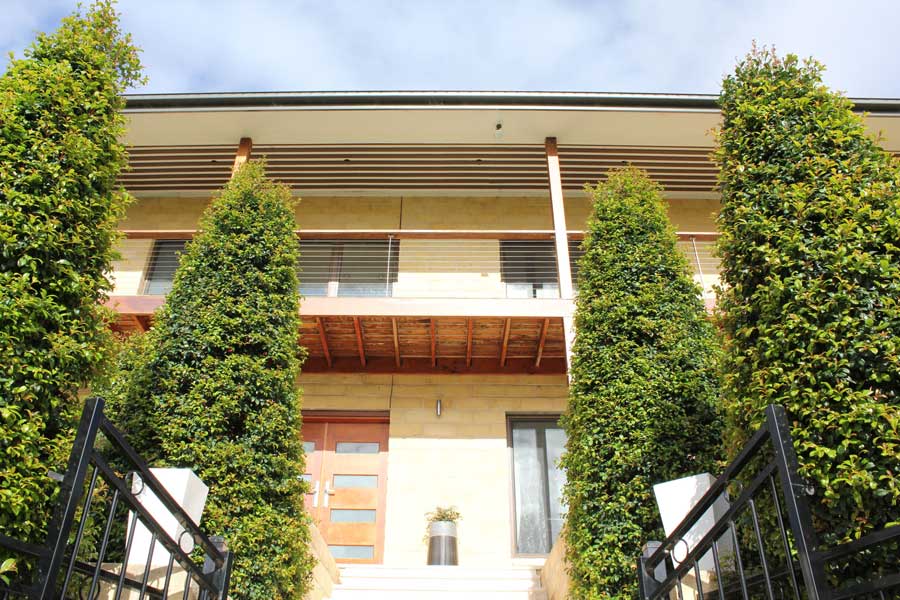
Resilience
Lilly pillies can generally withstand harsh weather conditions. Whether it’s scorching summer heat or frosty winter mornings, these plants remain resilient.
Low Allergenic
Lilly pillies have a low allergenic rating, making them a suitable choice for people with allergies. If you or someone in your family has allergies, a lilly pilly hedge could be an excellent choice for your garden.
Edible Berries
Some varieties of lilly pillies produce edible berries. These can be used in various recipes, offering a unique benefit of having an edible hedge. However, these berries can be messy, so keep reading for a variety that rarely produces berries.
Money-Saving Tips for Planting, Growing, and Maintaining Lilly Pilly Hedges
Planting
Starting your lilly pilly hedge off on the right foot can save you time and money in the long run. One technique that promotes healthier growth is to soak your plants before planting. This allows the roots to absorb water and nutrients more effectively. A well-prepared plant is more likely to thrive, reducing the likelihood of replacement costs later on.
Watering
Watering guidelines for lilly pilly trees are pretty straightforward. Water your plants thoroughly immediately after planting to help settle the soil and reduce transplant shock (but beware over-watering in heavy clay). Lilly pillies tend to do best with regular watering, especially in the first few weeks. However, avoid overwatering as it can lead to root rot and other issues. By being mindful of how much water your plants are getting, you can save on water costs and prevent potential problems before they arise.
Pruning
Regular pruning is a key aspect of maintaining a thick, bushy branch structure for your lilly pilly hedge. It’s better to prune a little bit often, rather than cutting large amounts off a plant rarely. This not only keeps your hedge looking its best but also saves on the cost and effort of drastic pruning or replacement later on, after your hedge has become overgrown.
Sweeper Waterhousea is an absolute giant of a lilly pilly hedge.
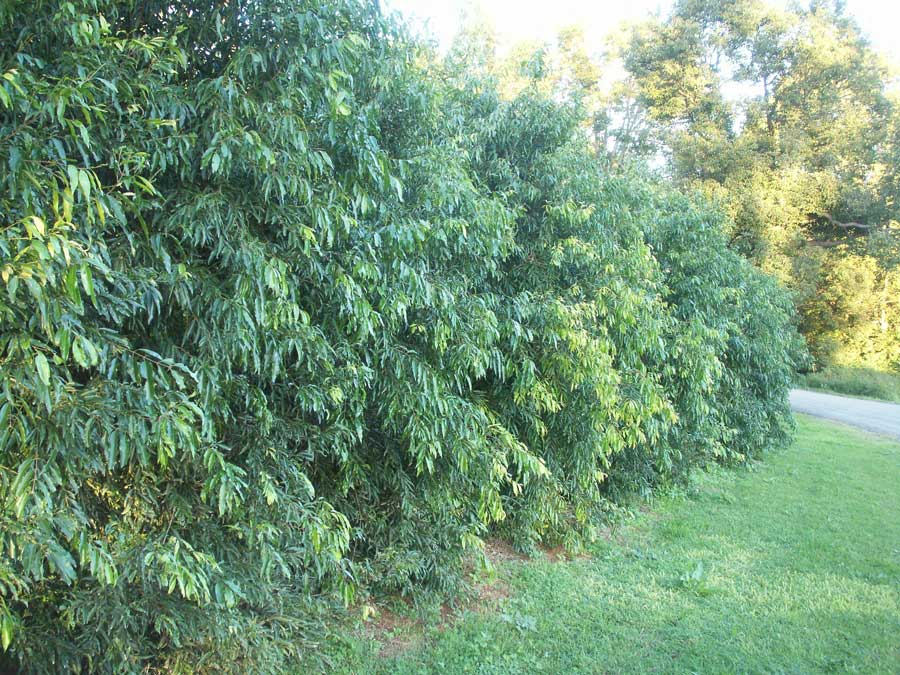
Fertilising
To promote healthy growth and thicken up your lilly pilly hedge, use a regular plant fertiliser. Contrary to popular belief, lilly pillies don’t need a “native” fertiliser. Chunky mulch also helps retain moisture in the soil, reducing the need for frequent watering. It’s a simple tip that can make a big difference in the health and appearance of your hedge.
Location
Choosing the right location for your lilly pilly is the most important tip for healthier growth and lower maintenance costs. While lilly pillies are adaptable, they perform best in full sun, although many can tolerate moderate shade. Consider the specific needs of the lilly pilly variety you’ve chosen when deciding on its location in your garden or landscape.
Straight and Narrow™ Syzygium australe ‘SAN01’ PBR Intended
This columnar variety of lilly pilly is known for its very slender, semi-compact, and dense growth habit. It features tight, attractive leaves and white flowers that evolve into beautiful pink/red fruit. It can grow to a mature size of 5-8m high x 1-1.5m wide, but it can also be pruned down to 2m if necessary.
Its narrow form makes it perfect for constrained planting areas such as along fences and driveways. It’s also suitable for creating topiary. This plant prefers full sun to shade and suits moist, well-drained soil types. It’s tolerant of cold and dry conditions and has natural resistance to psyllid, making it less likely to have this problem.
Pinnacle™ Syzygium australe ‘AATS’ PBR
Pinnacle™ Syzygium is another narrow-growing variety of lilly pilly that is excellent for screening. It features lush, evergreen foliage and matures to a height of up to 6-10 metres and a width of 1-1.5 metres. Pinnacle™ Syzygium provides a formal, elegant look in the landscape and can be used as a privacy screen or windbreak.
It’s susceptible to psyllids, which aren’t a big deal to the health of the plant but can cause bumps on the leaves. On the upside, psyllids are a valuable food source for many of our native birds, sugar gliders and predatory and parasitoid insects.
Sublime™ Acmena smithii ‘DOW30’ PBR
Sublime™ Acmena is a mid-sized tree that offers refreshing lime new growth and dense foliage all the way to the ground, making it an excellent choice for screening. It grows to a mature size of 3-5m high x 2-3m wide and produces clusters of white flowers in summer. These flowers rarely produce berries, making them much neater around entryways.
It’s ideal for screening and hedging in residential gardens and commercial landscapes, providing privacy and a lush green backdrop year-round. It prefers full sun to part shade and well-drained soil. Not only is it psyllid resistant, but also is highly resistant to myrtle rust.
Sweeper® Waterhousea floribunda ‘DOW20’ PBR
Sweeper® Waterhousea is a heavily weeping lilly pilly variety with large clusters of white flowers in summer. It matures to a height of up to 10 metres and a width of 5-8 metres, making it a good option for larger spaces.
The long, dark green leaves create a cascading effect, which can add a touch of elegance and drama to any garden. This variety is also resistant to psyllids and myrtle rust, reducing the risk of pest and disease problems.
Conclusion
In conclusion, lilly pillies make excellent hedges due to their fast growth, dense foliage, attractive appearance, and many other benefits. With proper care and attention, a lilly pilly hedge can be a cost-effective and beautiful addition to any garden or landscape.
Remember that not all varieties will perform the same. Even if they belong to the exact same species, a specially-bred cultivar may be more or less resilient to particular conditions, such as frost, drainage, heat, moisture, and so on. Always check plant labels or information online.

